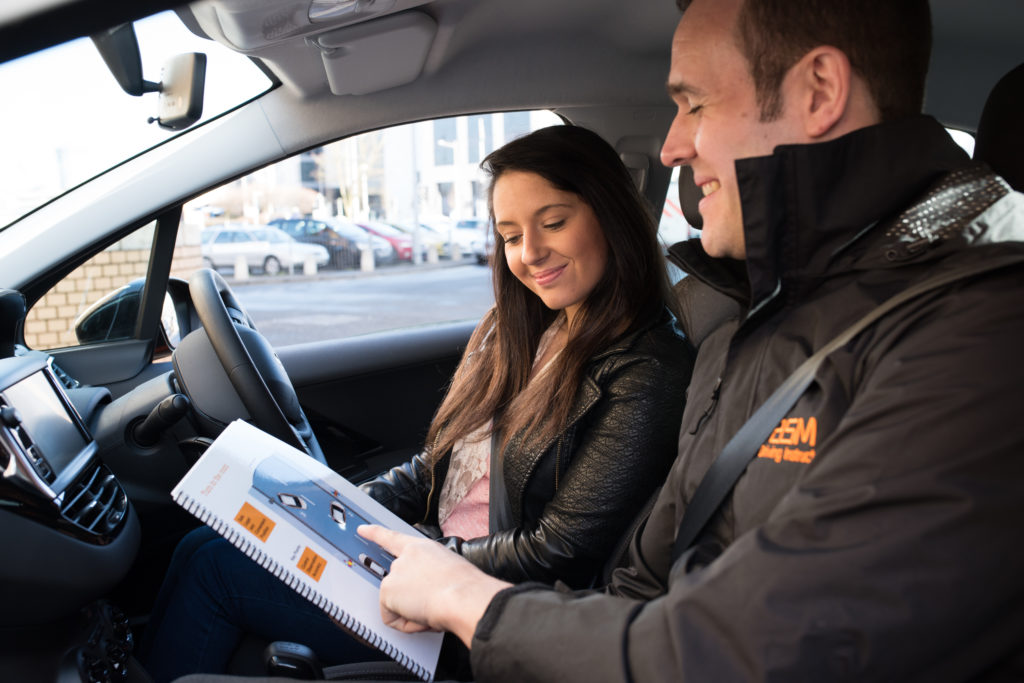Everything You Need to Know with BSM
Vehicle Safety
Checks

Vehicle Safety Checks
One of the first things you learn when you get behind the wheel of a car is the vehicle safety check routine, which is also known as the ‘Cockpit Drill’. It involves adjusting everything from your seat position to your mirrors until they’re in the perfect place for safe and comfortable driving.
It’s a really important pre-driving process, because if any of the things included in these interior vehicle checks aren’t carried out properly, it can mean that you will either be uncomfortable while you drive or not have a full view of the road around you. Both of these things can mean you’re putting your safety risk.
So, with this in mind, here we give you a rundown of everything you need to know about the routine, so that you can get a head start on your learning.
The DSSSM Routine
Once you’re sitting behind the wheel of your car, you will need to check that the handbrake is on and that the gear stick is in neutral (or in ‘PARK’ for automatic cars). The next step is to begin your pre-driving vehicle safety checks and before you worry about remembering everything, there’s a handy acronym that will help you ensure nothing is missed out.
That acronym is DSSSM, which stands for Doors, Seats, Steering, Seatbelt and Mirrors. This is the best order in which all your checks should be carried out. Let’s take a look at each part of the process in a little more detail.
Doors
The first step is to check your doors are all properly closed, which you can do by visibly checking before you get in or by stepping out of the vehicle. If you do get out of the car to do it, you should look over your shoulder to make sure there are no passing drivers and cyclists.
Another thing to keep your eye on are any dashboard warning lights that are telling you that one of your doors is open. Once you’re happy that all your doors are properly closed, it’s time to move on to step two.
Seats
Next you’ll make sure that your seat is in the right position. You should be positioned comfortably and that be close enough to reach the foot pedals without any difficulty. When you’re in the right place, you’ll be able to reach the pedals without having to stretch.
Steering
Most modern cars allow you to adjust the steering wheel, which you should do to make sure that it’s in the right position (or angle). It should also be turned to the centre i.e. not turned with right or left lock on and if you’ve carried out the previous step properly, you’ll be at the right distance from the wheel to drive safely.
Seat Belt
Seat belts are something everyone should be aware of, as wearing one while driving has been law for many years. As the driver, you are responsible for putting on your seat belt, which should be done each and every time you drive - regardless of whether your first manoeuvre is in reverse.
Mirrors
Next you will be adjusting your interior mirror, as well as your wing mirrors to ensure they’re set up to give you complete visibility of the area around your car. Just remember to position your mirrors to give you a good view of the side of your car, as well as the road behind you.
You’re All Set Up and Ready to Start Driving
After you’ve carried out the easy-to-remember DSSSM routine, you should be in a safe and comfortable position, with all your doors closed and full view of the road around you. Being safe out on the road means first checking your car is safe for you to drive and this simple acronym helps you remember things in the right order.
You’re now ready to move off and by following the routine every time you drive, it will become second nature before you know it.